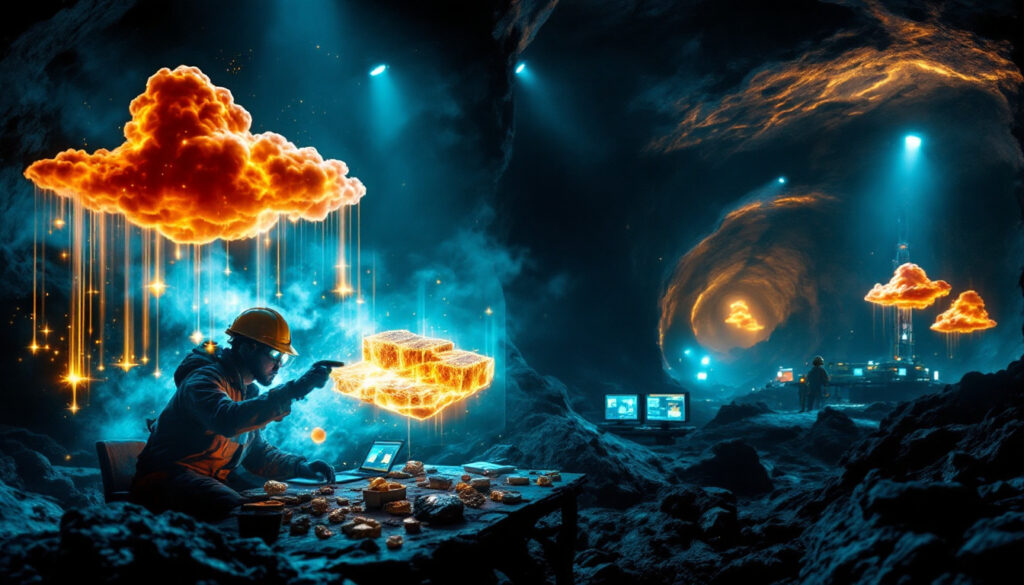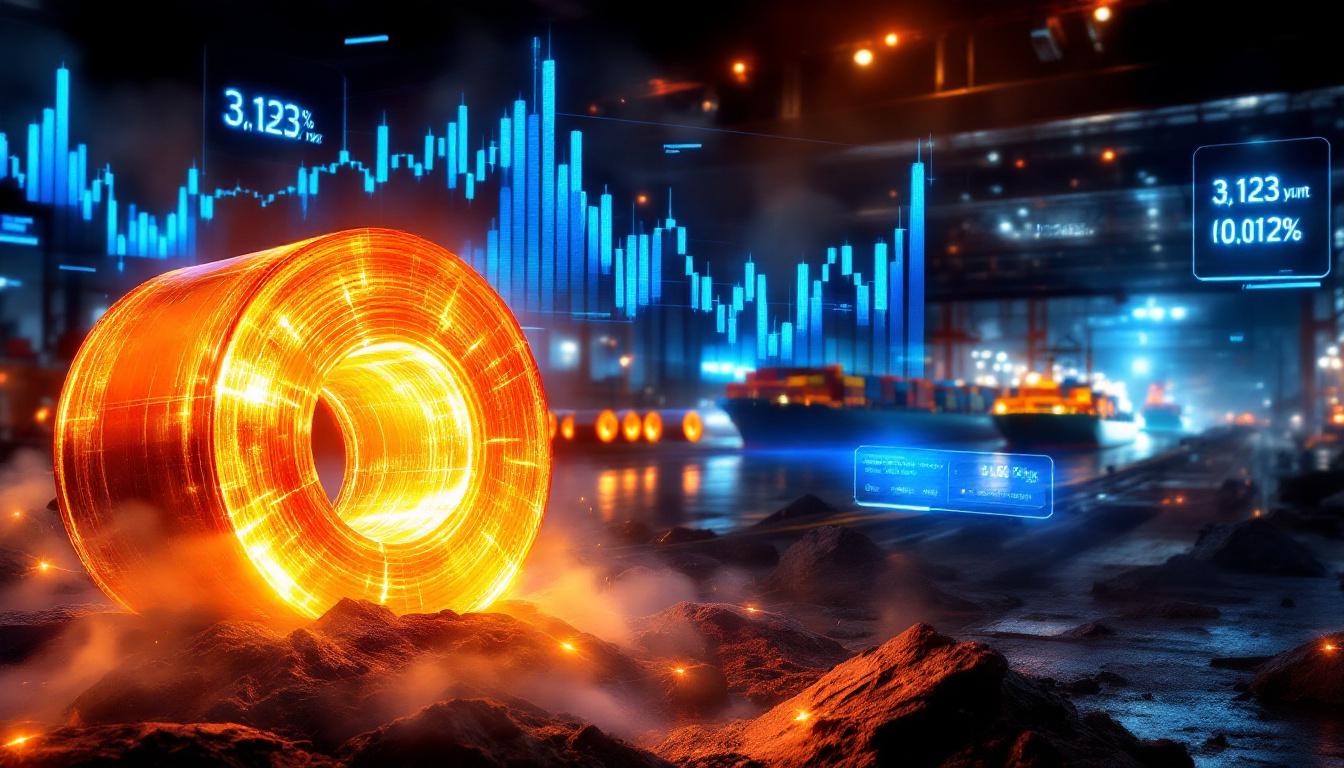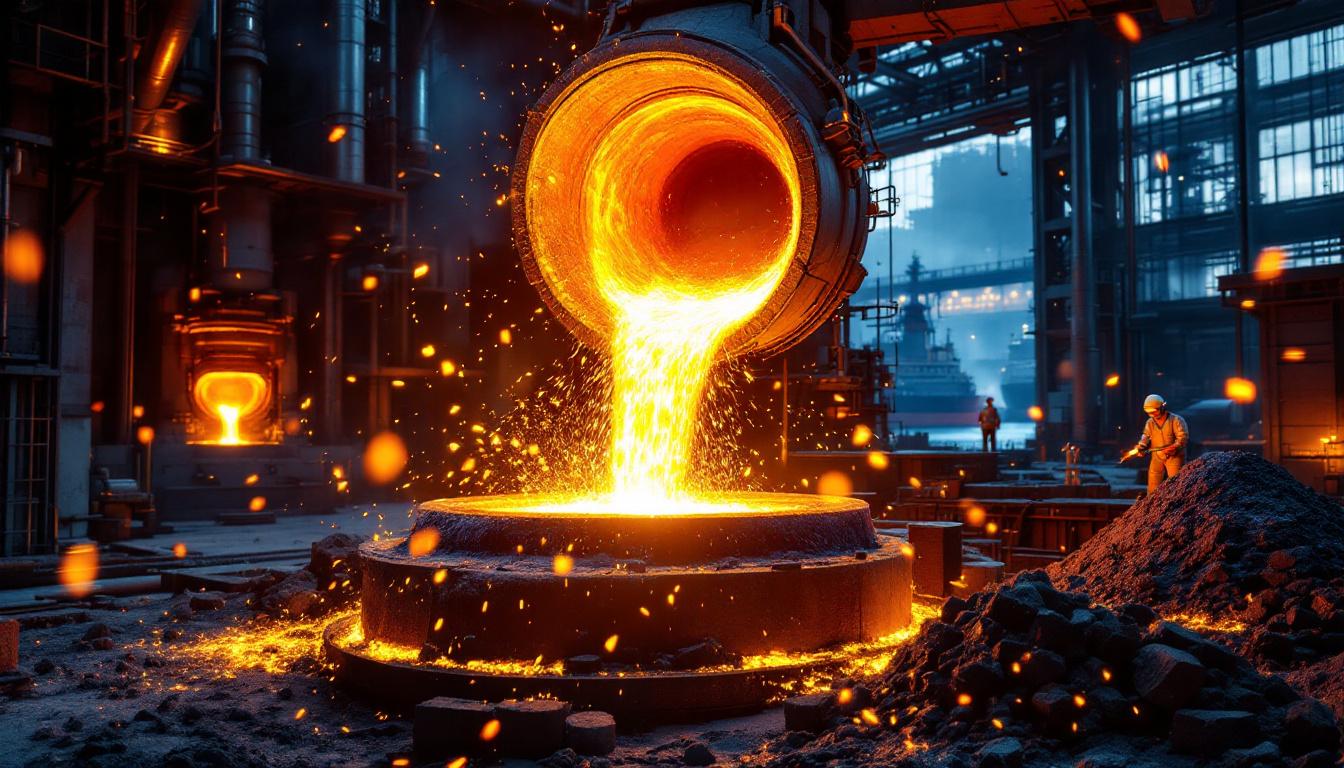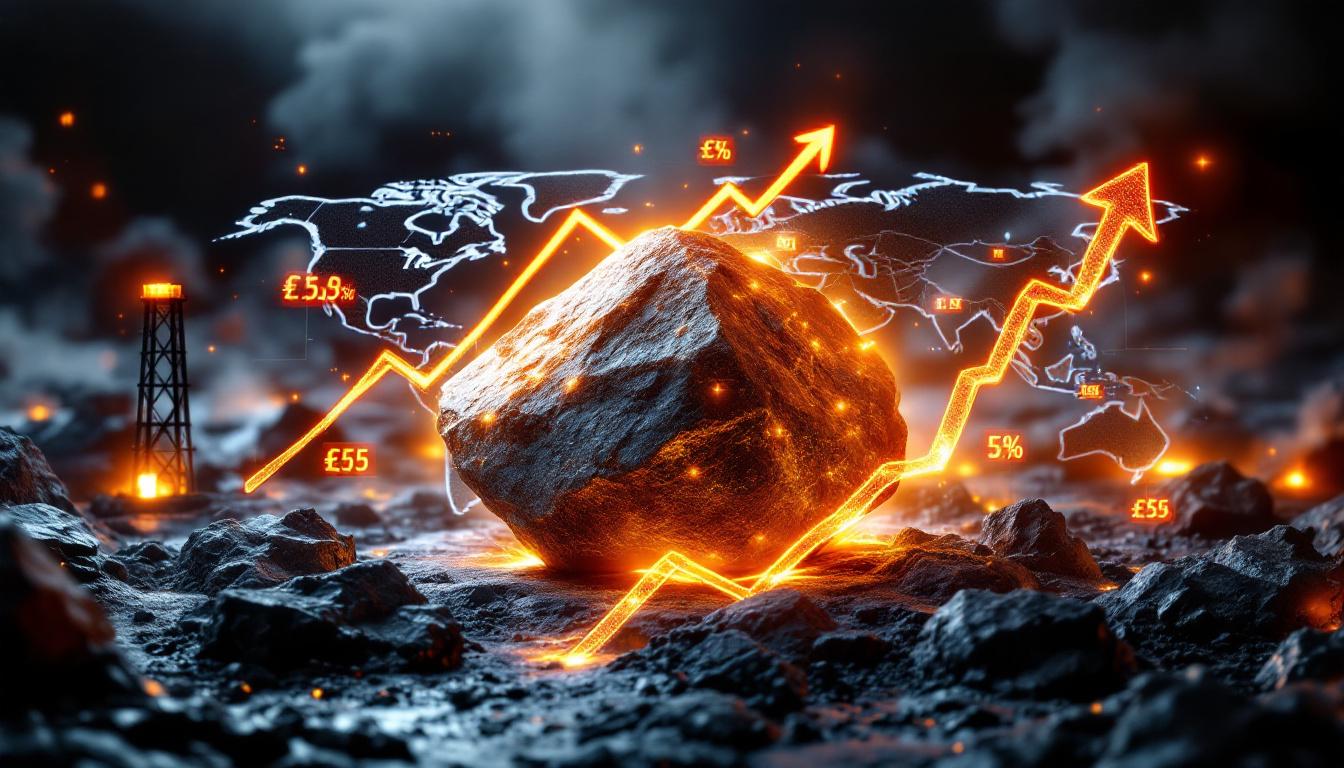How Does AI Enhance Mineral Exploration Success?
The minerals industry stands at a crossroads where traditional exploration methods are yielding diminishing returns as easily accessible deposits become increasingly rare. With global mineral demands projected to grow significantly to support renewable energy transitions and technological advancement, the need for more sophisticated exploration techniques has never been more critical. AI in mineral exploration represents a transformative approach that is revolutionizing how companies identify and evaluate potential deposits.
Understanding the Challenge of Modern Mineral Exploration
Mineral exploration today faces unprecedented challenges. Discovery rates for high-grade deposits have been declining steadily over the past decades, with many geologists acknowledging we've already found most deposits that outcrop at surface. The remaining undiscovered resources typically lie deeper and require more sophisticated detection methods.
Traditional exploration methods—largely reliant on geological mapping, geophysical surveys, and conventional drilling programs—are becoming less effective as "easy-to-find" deposits are depleted. Industry data suggests that discovery costs have increased by over 400% in the last two decades, while success rates have declined by approximately 30%.
The mining sector must now innovate to meet the projected demand for critical minerals needed for the next 20-30 years. With copper demand alone expected to increase by 50% by 2040 according to the International Energy Agency, exploration efficiency must improve dramatically. This is where digital transformation in mining becomes essential for future success.
The AI-Driven Approach to Resource Estimation
Artificial intelligence offers a fundamentally different approach to mineral exploration compared to traditional geostatistical methods. Unlike kriging or inverse distance weighting, AI-driven systems employ non-geostatistical techniques that work directly with raw exploration data, including collar surveys and assay results.
"The key difference is that AI doesn't rely on predefined geological assumptions but instead discovers patterns directly from data, similar to how image recognition works," explains Dr. Sarah Chen, a leading AI geologist. "These systems can identify complex, non-linear relationships between multiple variables that human geologists might miss."
The validation process for AI models is particularly rigorous, involving temporal splits where models train on historical data and predict outcomes that can be verified against known results. This includes testing prediction accuracy at depth, across different regions of a deposit, and across varying geological domains—all critical factors that traditional mineral exploration strategies often struggle with.
The Jundy Mine Case Study: AI Application in High-Nugget Gold Deposits
One of the most compelling demonstrations of AI's effectiveness comes from the Jundy Mine, where machine learning techniques were applied to a particularly challenging orogenic gold deposit with extremely variable mineralization.
Deposit Characteristics and Exploration Challenges
The Jundy deposit represents a classic exploration challenge: an orogenic load deposit with a 40% nugget factor, meaning nearly half of the gold distribution is randomly distributed rather than following predictable patterns. With an economic cutoff grade of 2.2 g/ton, traditional exploration methods struggled to efficiently identify viable mining blocks.
The operation required identifying high-grade targets at least 6 meters away from existing drill holes—approximately 12 times the block size used in resource modeling. This distancing requirement made accurate prediction particularly challenging for conventional methods.
Proven Results from AI Implementation
When implemented at Jundy, the AI-driven exploration program delivered remarkable results: a 24% improvement in efficiency for locating high-grade blocks compared to baseline drill programs using traditional methods.
"What's particularly impressive is that we achieved a higher hit rate precision without sacrificing exploration coverage," notes mining engineer Robert Thompson. "The AI system discovered 3.2 times more high-grade material than conventional programs using the same number of drill holes."
This outcome translated to approximately $18 million in additional recovered value for the operation, with the AI system consistently identifying zones where grade exceeded 4.5 g/ton—more than double the economic cutoff. Such results highlight why revolutionizing mining with AI is becoming increasingly important across the industry.
Key AI Techniques for Mineral Exploration
The success of AI in mineral exploration relies on several innovative approaches that differ fundamentally from traditional methodologies.
Leveraging Geochemical Data as Pathfinders
AI systems excel at identifying complex geochemical signatures that serve as pathfinders to mineralization. Unlike conventional approaches that might focus on a handful of indicator elements, AI can analyze relationships between dozens of elements simultaneously.
These systems automatically group elements into lithological categories—for example, identifying Group A elements with hafnium as the leader element, which might correlate with particular intrusive bodies. What makes this approach powerful is its ability to identify non-linear correlations that traditional statistical methods would miss.
"We use three correlation statistics simultaneously—Pearson, Spearman, and Kendall—to capture different types of relationships," explains geochemist Dr. James Walker. "This allows us to identify both positive indicators, like arsenic correlating with gold, and negative indicators, such as high vanadium suggesting an absence of gold mineralization."
Optimizing Lithological Classifications
AI systems transform interpretive lithologies into data-driven inputs that can be objectively analyzed. Rather than relying solely on geologist interpretations, which may vary between individuals, these systems create consistent classifications based on measurable parameters.
Simple but effective groupings might include separating country rock from unmineralized sulfide and sulfide hosting gold. More sophisticated approaches incorporate mafic-felsic-sedimentary rock classifications as direct model inputs.
Interestingly, AI analysis has revealed that seemingly minor geological features can have outsized importance. For instance, at several gold deposits, the presence of lamprophyre dykes—previously considered largely unimportant—was identified as a critical pathfinder for gold mineralization, likely indicating deep-tapping structures that facilitated hydrothermal fluid movement.
Ensemble Modeling for Confidence Assessment
Perhaps the most powerful aspect of AI in mineral exploration is the ability to create ensemble models that approach the same prediction problem from multiple angles.
"We create different 'viewpoints' of the same target by training multiple models with varying input combinations," says data scientist Dr. Lisa Rodriguez. "When these diverse models agree on a prediction, we have high confidence in that result."
This approach generates probability volumes that quantify the likelihood of mineralization, allowing exploration teams to make risk-weighted decisions. Areas with prediction probabilities above 10% might be suitable for early-stage exploration, while those above 50% might warrant immediate development drilling. According to research from SLR Consulting, this risk-based approach can reduce exploration costs by up to 35% while improving discovery rates.
Advanced Data Processing Methods
Beyond the core modeling techniques, AI exploration systems employ several innovative data processing methods that preserve critical information often lost in traditional approaches.
Innovative Compositing Techniques
Traditional compositing methods often dilute high-grade intersections, potentially masking the economic potential of a deposit. AI systems address this by employing multiple compositing strategies simultaneously.
"We retain maximum grade information by using both average composites and maximum composites as separate inputs to our models," explains geostatistician Emma Chen. "This dual approach captures high-grade nugget values that might be completely lost in traditional compositing."
In one case study at a West African gold deposit, this approach identified several high-grade shoots that had been essentially invisible in conventional resource models, ultimately adding 15% to the deposit's recoverable gold.
Creating Probability Maps for Target Selection
AI systems generate probabilistic clouds showing potential target locations with quantified confidence levels. These maps compare ensemble models with different weighting schemes, allowing exploration teams to visualize uncertainty.
"The key advantage is being able to quantify confidence levels," notes exploration manager David Wilson. "We can target areas with probabilities above 10% for exploration drilling while focusing development on zones above 40-50% confidence."
This probabilistic approach has proven remarkably effective at converting unclassified regions to measured resources efficiently. In one documented case, a copper porphyry operation reduced resource conversion drilling costs by 37% using AI-generated probability maps to optimize drill hole placement. The implementation of digital twins in mining further enhances these capabilities by creating virtual replicas of deposits for scenario testing.
How to Apply AI to Different Deposit Types
While AI techniques share common foundations, their application varies significantly across different deposit types, each with unique geological and exploration challenges.
Application to IOCG Copper Deposits
Iron oxide copper-gold (IOCG) deposits represent a distinct challenge due to their complex alteration patterns and structural controls. A case study from a Chilean copper asset with over 120,000 geochemical samples demonstrates AI's effectiveness in this context.
By targeting previously unexplored zones beyond known mineralization, the AI system discovered resources with in-situ value exceeding $64 million, featuring average grades three times above the economic cutoff.
"What's remarkable is that the AI identified structural controls completely missed by conventional interpretation," explains structural geologist Dr. Carlos Mendez. "It recognized subtle relationships between potassic alteration intensity, certain trace elements, and copper grade that weren't apparent in traditional analyses."
Prioritizing Data Inputs for Sparse Environments
Not all exploration projects have abundant data, but AI systems can be adapted for data-sparse environments by creatively prioritizing available inputs.
Even visually logged but unassayed material can provide valuable inputs. In one innovative application, AI analysis identified significant potential in material logged as country rock, which subsequent assaying revealed contained low-grade copper mineralization in approximately 40% of cases.
"We create separate input channels for different data quality levels," explains data architect Sarah Johnson. "This allows the model to appropriately weight high-confidence data while still extracting value from less certain observations."
Practical Implementation Considerations
Implementing AI exploration systems requires careful consideration of numerous practical factors that influence performance and reliability.
Hyperparameter Tuning for Different Mining Scenarios
The same AI architecture requires different configurations depending on whether it's being applied to underground stope optimization or exploration drilling. For mine planning applications, confidence thresholds typically need to be higher (P>40-50%) to ensure operational reliability.
For initial exploration, lower thresholds (P>10%) are acceptable, allowing teams to cast a wider net while still maintaining significantly better targeting than conventional methods. This flexibility allows the same underlying technology to support decisions across the mining value chain. Furthermore, when combined with AI-powered fleet management, companies can achieve operational efficiencies beyond just exploration.
Algorithm Selection and Performance
While many AI applications rely on common algorithms like random forest and gradient boosting, mineral exploration presents unique challenges that often require more sophisticated approaches.
"Deep learning algorithms, particularly modified convolutional neural networks, consistently outperform traditional methods in capturing geological complexity," notes AI researcher Dr. Michael Zhang. "These architectures excel at modeling interdependent geological events like hydrothermal alteration sequences, mineralization events, and structural modifications."
The ability to capture these complex relationships enables AI systems to identify subtle exploration indicators that traditional approaches would likely miss, such as trace element signatures that telegraph proximity to mineralization before visible alteration appears. According to recent research published in the Journal of Geochemical Exploration, these advanced AI approaches can improve prediction accuracy by up to 45% compared to conventional methods.
FAQ About AI in Mineral Exploration
What makes AI more effective than traditional geostatistics?
AI's primary advantage lies in its ability to identify complex nonlinear relationships between multiple variables. While traditional geostatistics excel at describing spatial continuity, they typically struggle with multivariate relationships and non-Gaussian distributions. AI in mineral exploration captures geological patterns across dozens of variables simultaneously, resulting in higher precision targeting.
How much historical data is needed to implement these AI techniques?
While more data generally improves results, successful implementations have been achieved with as few as 50-100 drill holes in relatively consistent geological environments. The techniques can be adapted for data-sparse environments by using spatial splits, depth predictions, and ensemble approaches that quantify prediction uncertainty.
Can AI techniques be applied to greenfield exploration?
Yes, though performance improves with some baseline data. For greenfield exploration, AI systems often incorporate regional geological data, geophysical surveys, and remote sensing information to identify areas with signatures similar to known deposits. The techniques are particularly valuable for extending known mineralization and identifying missed opportunities in brownfield settings.
What types of deposits respond best to AI exploration methods?
The methods have proven effective across deposit types, from high-nugget gold deposits to IOCG copper systems. They provide particular value in complex, structurally controlled mineralization where traditional methods struggle to capture the multiple factors controlling ore distribution. Deposits with significant geochemical haloes or pathfinder elements also benefit substantially from AI's ability to identify subtle multi-element patterns.
Ready to Discover the Next Major Mineral Opportunity?
Gain instant alerts on significant ASX mineral discoveries with Discovery Alert's proprietary Discovery IQ model, transforming complex exploration data into actionable investment insights. Understand why major mineral discoveries can lead to exceptional market returns by exploring Discovery Alert's dedicated discoveries page and begin your 30-day free trial today.




